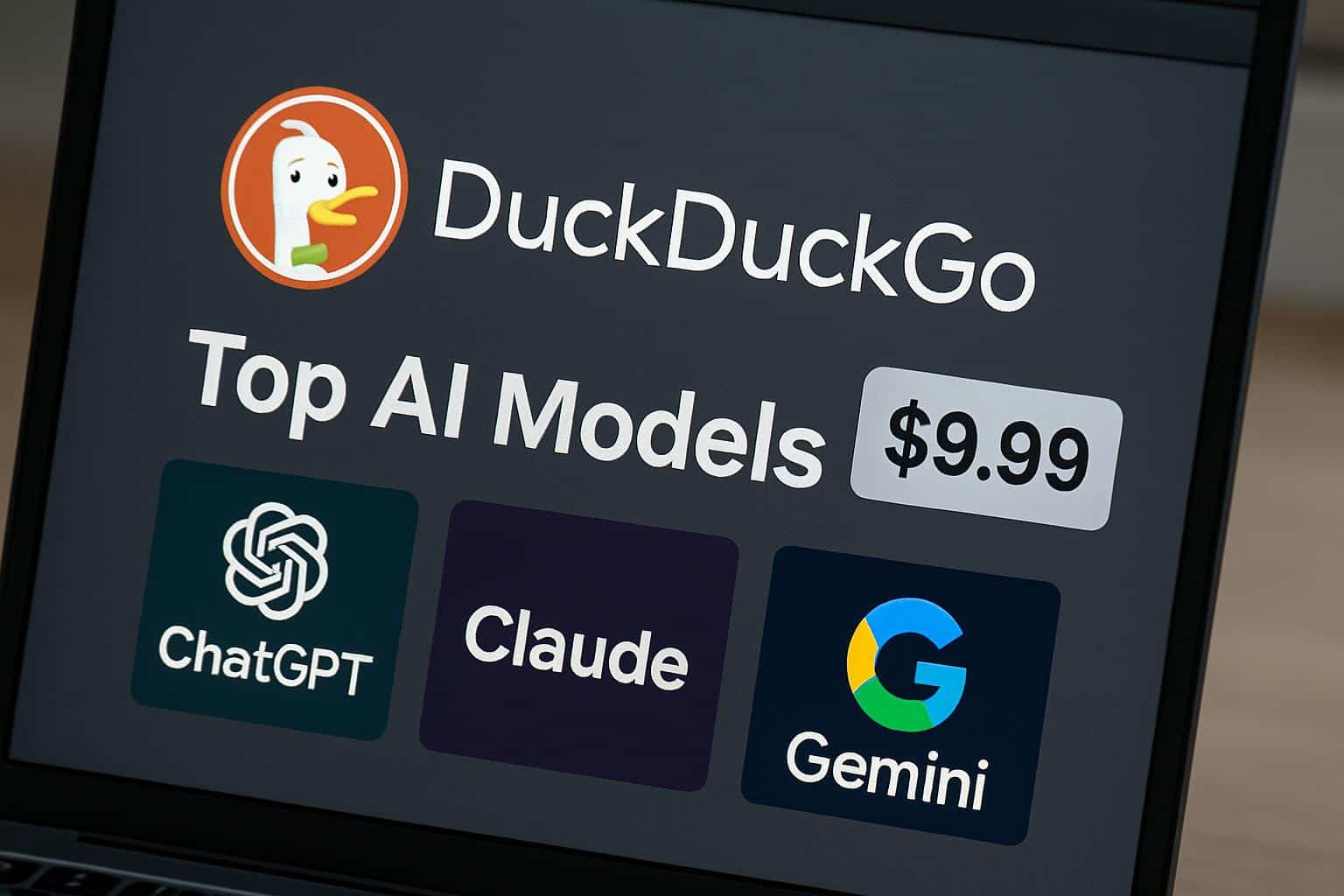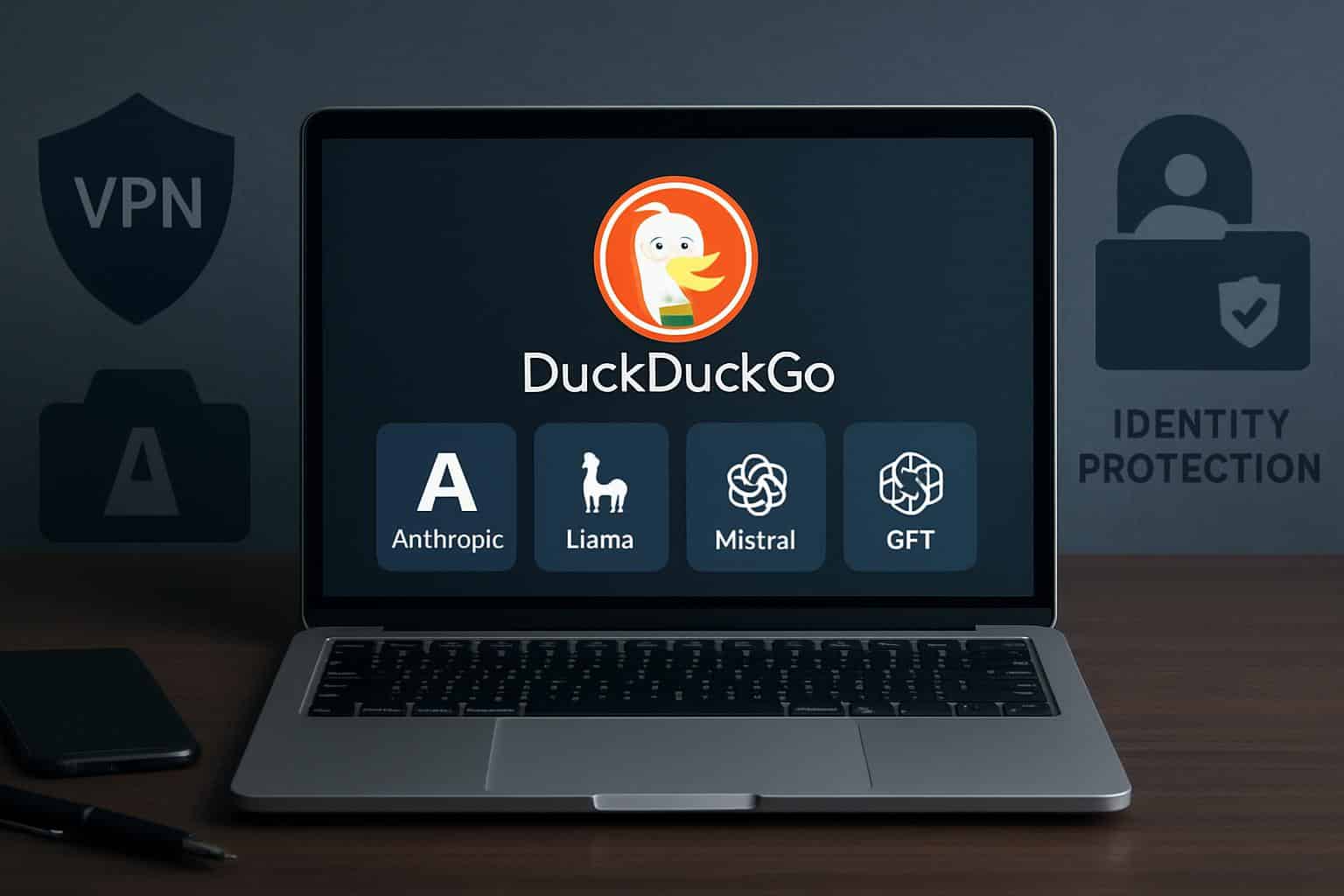DuckDuckGo is adding more to its privacy-first subscription service with the addition of access to advanced AI models in the subscription clampack, offering the paid users a way to leverage established chatbots without having to juggle multiple providers. The upgrade rides on Duck. ai, the company’s chatbot interface, and is offered in addition to the plan’s VPN, personal info removal, and identity theft restoration services.
The move aims at a growing demographic among consumers and professionals who seek multi-model breadth without trading away privacy or managing a patchwork of separate AI accounts.

What the subscription adds
Duck. ai, which is still free to use, already has a rotating cast of capable models, including Anthropic’s Claude 3.5 Haiku, Meta’s Llama 4 Scout, Mistral AI’s Mistral Small 3 24B and OpenAI’s GPT‑4o mini. These are optimized for speed and everyday tasks such as drafting emails, summarizing articles and providing code completion.
With the $9.99‑a‑month plan, subscribers will be able to tap in to newer, bigger models: OpenAI’s GPT‑4o and GPT‑5, Anthropic’s Claude Sonnet 4, and Meta’s Llama Maverick. In practice, this means better adherence to complicated instructions, longer context windows for longer conversations, and stronger reasoning—useful for multi-step analysis or research synthesis, or for debugging nontrivial code.
Each of those providers does the computer-vision-ML thing slightly differently — which means users can choose what they want a model to emphasize: quick turnarounds on images and documents, better reasoning with a model that’s a little stronger in that area, or, if they need something in between, a model that is good at understanding images (but not much else).
Privacy stance and data handling
DuckDuckGo’s pitch centers on privacy. The company says it proxies requests to AI to aid in obscuring personal identifiers—like IP addresses—from upstream model providers and pledges to minimize the retention of data. That follows best practice recommended by groups like the Electronic Frontier Foundation, and aligns with principles of the NIST AI Risk Management Framework around minimizing unnecessary data exposure.
For those users who are skeptical of logging in and doing cross-service profiling, a privacy-first gateway can curtail the huge metadata trail left by switching between multiple freestanding AI apps. As always, the devil is in the details: users should check how prompts are stored, whether they are fed into the model and how long transcripts are kept.
How it compares with competitors
Multi-model access has emerged as a key battleground. You can get lots of models in Quora’s Poe, whose entry pricing begins under that, but piles on usage caps and upsells for premium access. Single-vendor prepaid offerings, like Microsoft additionally offers with Copilot Pro at $19.99 a month, as does Google with its AI-centric plan—perplexity pro (although often with tighter integrations or fewer model choices).

DuckDuckGo’s angle is breath plus privacy at a midtier price. For customers go to a single interface — and for those who value the VPN and identity protection bundle — the combined product could reduce total cost compared to purchasing AI and security tools separately.
Why it’s important for daily use
AI performance varies meaningfully across tasks. Something swift like Claude 3.5 Haiku could be great for quick Q & A or retyping text, whereas models like Claude Sonnet 4 or GPT-4o are best for multi-step reasoning, dense spreadsheets, and code generation. Multimodal models may be able to summarize PDFs, read graphs, or translate screenshots. Providing consumers with frictionless access to several models within one walled garden reduces the switching cost — and the cognitive cost — of choosing the right model.
The consumer appetite is real but uneven. According to Pew Research Center, about a quarter of U.S. adults have experimented with a top chatbot and usage is highest among younger adults and knowledge workers. Surveys of businesses like McKinsey’s also have shown continued adoption across functions, including in marketing, software and customer operations. It’s about broadening the usage among people who may have held back because of privacy concerns, and also providing information that we might not already have about the way these disease naturally exist in the world.
Open questions and roadmap
DuckDuckGo says it’s exploring higher-priced tiers with larger or more specialized models, but has not published message or rate limits for the current offering. Those caps will be crucial; the majority of a large number of competitors throttle usage to contain compute costs and discourage abuse.
Another consideration is model routing — whether Duck. ai will latter recommend automatically the best model for a task. That kind of orchestration can lead to improved quality and cost-effectiveness, but requires a careful transparency that ensures the users know what runs where.
The bottom line: By packaging top-end AI access in conjunction with the subscription that’s the most privacy-focused on the market, DuckDuckGo is positioning itself as a credible channel to the quickly evolving model landscape.
If the company combines clear boundaries with trustworthy performance, it could serve as a default residence for people who want a taste of many AI worlds without laying their data out across the internet.

